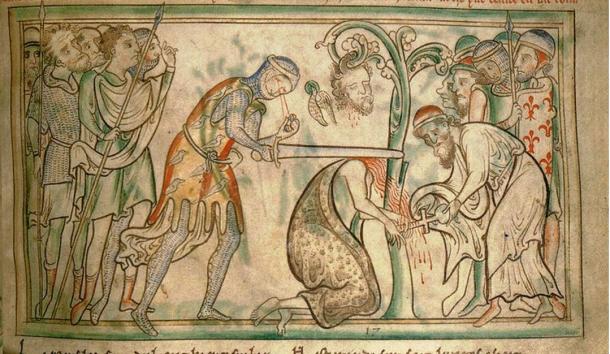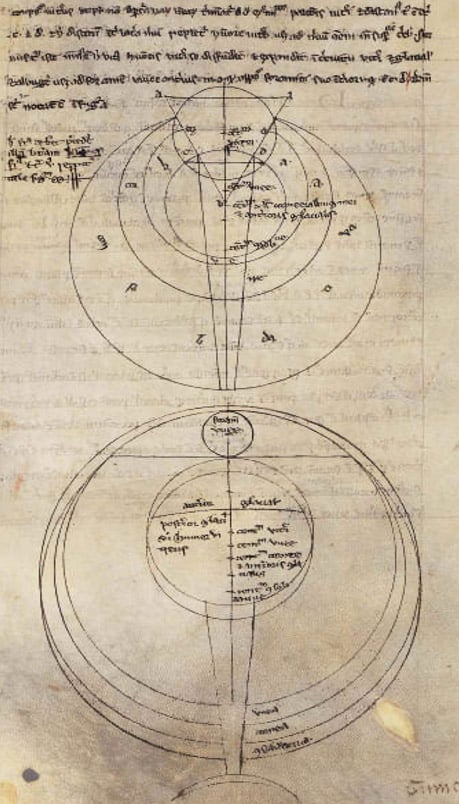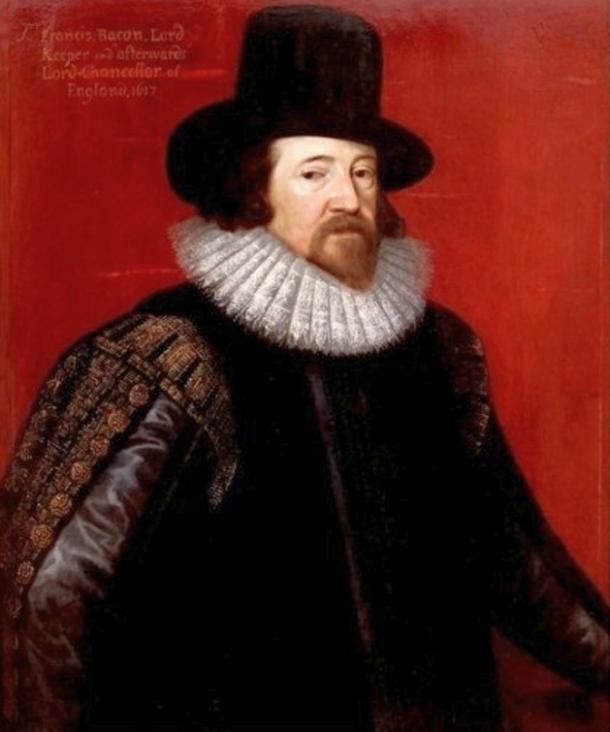
The Immortal Count of Saint Germaine: Ascended Master of Ancient Wisdom
The Count of Saint-Germaine claimed many times to be immortal, apparently already three hundred years old by the time of his appearance in the 1700s. However, there is another more peculiar version of the story of Saint-Germaine revealed in historical records. It is believed by many that Saint-Germaine was an Ascended Master of Ancient Wisdom, the head of a theosophical belief system which thought people could be reincarnated to acquire wisdom that would eventually unify the spiritual and material aspects of the universe. These Masters supposedly achieved the same kind of ascension as did Jesus of Nazareth in the Bible. This theosophical faith continues to this day, and Saint-Germaine is still considered to be one of its masters. His followers think that the historical man was actually reincarnated over and over again before his birth as Saint-Germaine, as various prominent figures in the historical timeline. These figures were all people of supreme importance, and all had a resounding, lasting effect on the history of the world.
The first supposed incarnation of the Count of Saint-Germaine is that of a High Priest of the Violet Flame temple, over fifty thousand years ago. It is said that he brought enlightenment to the people of that culture, bringing to them the concept of the cosmic consciousness, but that they abandoned that path for worldly delights instead. When this happened, the man who would be Saint-Germaine then left the tribe to succumb to their sins. He is recorded next as the prophet Samuel from the Old Testament, who chose Saul to be king of the Israelites only to have Saul deny him. Then, Saint-Germaine was supposedly born as Joseph, Mary's husband and Jesus of Nazareth's earthly father. One of his most intriguing supposed incarnations, however, is that of the counselor, and possible wizard, Merlin of the court of King Arthur. Evidently, there was a thin line between science and magic for certain followers of Saint-Germaine.
- Did Ancient People Really Have Lifespans Longer Than 200 Years?
- The Legendary Emerald Tablet
- Mystical Science of Alchemy Arose Independently in Ancient Egypt, China, India

Some believe Merlin the Magician was an incarnation of Saint Germaine (Andy / flickr)
The most widely accepted previous incarnations of Saint-Germaine began in the third century AD. He is considered to have been Saint Alban, the first British martyr for the Christian faith, who was beheaded for not giving away the position of the monk Amphibalus to Emperor Diocletian. He was viciously tortured before being killed, and is highly respected for enduring his torments patiently.

The martyrdom of St Alban, from a 13th-century manuscript, now in the Trinity College Library, Dublin (Wikimedia Commons)
Shortly after his time as Alban, Saint-Germaine was reputed to have become Proclus Lycaeus, head of Plato's Academy in Athens. He began his adulthood as a successful lawyer before becoming disillusioned and traveling to Athens seeking philosophical tutelage. He next came to be known as Roger Bacon, a Franciscan and philosopher born in the thirteenth century. Roger Bacon was a firm believer in the Philosopher's Stone and an elixir of life, he amassed large groups of followers based on his passion and intellect alone.

Roger Bacon's circular diagrams relating to the scientific study of optics. By Roger Bacon also Saint Germaine, late 13 th Century. (Wikimedia Commons)
His place of study became a pilgrimage site after his death, and legend spread that he was more than just a philosopher, but also some sort of wizard who had tricked the devil. By the nineteenth century, however, he came to be considered an eccentric scientist more than anything else.
Saint-Germaine’s final and most powerful form was said to be that of Sir Francis Bacon, a member of Queen Elizabeth I's court. Francis Bacon is now considered as the father of empirical science, as well as the possible true author of most of William Shakespeare's play, although this is hotly contested. Most interestingly, however, some followers of Saint-Germaine believe that Francis Bacon faked his death on Easter Sunday in 1626, and then traveled in secret to Transylvania where he made his home until he ascended to Master on May 1, 1684.

Frans Pourbus the younger, Sir Francis Bacon is also said to be an incarnation of Saint Germaine. By Artist Paul Van Somer, 1616. Held at the National Portrait Gallery. (Wikimedia Commons)
It was after this alleged ascension that Bacon requested one final form and returned to the world as the elusive Count of Saint-Germaine until his "death" in the eighteenth century.
However, the life of Saint-Germaine does not appear to end there either. Though he died in Schleswig-Holstein, home of his friend Prince Karl of Hesse-Cassel, there are no funerary or burial records of his passing. Many ascension followers believe that Saint-Germaine continues to be reincarnated, a supposed sighting of him having occurred as recently as 1926. Whatever the real truth is, Saint-Germaine pervades history as an enigmatic figure, and continues to be valued both for his political and religious triumphs.
Featured Image: King David is anointed by the prophet Samuel to be the future King of Israel. The Prophet Samuel is believed by some to be the Ascended Master Saint Germaine. By Pablo Veronese C1555. (Wikimedia Commons)
By Riley Winters
References
Bernard, Raymond. Great Secret Count St. Germaine (Mokelumne Hill Press: CA, 1993.)
Blavatsky, H. P. Collected Writings. 15 vols (Theosophical Publishing House: Wheaton, 1977-91.)
Cooper-Oakley, Isabel. "The Comte de St. Germaine." Sacred Texts. 1912. Accessed May 18, 2015. http://www.sacred-texts.com/sro/csg/index.htm
De Seingalt, Jacques Casanova. "The Memoires of Casanova." The Project Gutenburg. 2006, 2013. Accessed May 8, 2015. http://www.gutenberg.org/files/2981/2981.txt
Guiley, Rosemary Ellen. The Encyclopedia of Magic and Alchemy (Facts on File: NY, 2006.)
Jinarajadasa, C. Early Teachings of the Masters (Theosophical Press: Chicago, 1923.)
——. Letters from the Masters of Wisdom: two volumes (Theosophical Publishing House: Adyar, 1988, 2002.)
Kavey, Allison. Books of Secrets: Natural Philosophy in England, 1550–1600 (University of Illinois Press: IL, 2007.)
New World Encyclopedia Contributors, "Saint Germaine, Count of," New World Encyclopedia. Accessed May 18, 2015. http://www.newworldencyclopedia.org/entry/Saint_Germaine,_Count_of#Alter_egos_and_incarnations
Prophet, Elizabeth Clare. Saint Germaine: Master Alchemist (Summit University Press: MT, 2004.)
Prophet, Mark L. Meeting the Masters: Teachings of the Ascended Masters (Summit University Press: MT, 2003.)
Saint Germaine Foundation. The History of the "I AM" Activity and Saint Germaine Foundation (Saint Germaine Press: IL, 2003.)
Young, Alexey. "The Rosicrucian’s." Orthodox America. Unknown. Accessed May 18, 2015. http://www.roca.org/OA/95/95p.htm
Zagorin, Perez. Francis Bacon (Princeton University Press: Princeton, 1999.)
















Comments
You stated that “there are no funerary or burial records of his passing” however, according to wikipedia “The Count died in his residence in the factory on 27 February 1784, while the Prince was staying in Kassel, and the death was recorded in the register of the St. Nicolai Church in Eckernförde. He was buried 2 March and the cost of the burial was listed in the accounting books of the church the following day (10 thaler for renting the plot for 30 years, 2 thaler for the gravedigger, and 12 marks to the bell-ringer. Marie Antoinette von Lowzow, Saint-Germain - Den mystiske greve, Dansk Historisk Håndbogsforlag, Copenhagen, 1984 p. 324.)”
Otherwise, great article